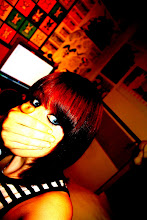Bleak House is an example of an unconventional period drama. It challenges the generic editing techniques used in a Victorian period drama which is usually very simple and straightforward in order to reflect the era and increase verisimilitude in order to attract the audience’s attention.
In contrast with the conventional period drama, Bleak House uses a range of editing techniques and aspects of mise-en-scene to create atmosphere and build tension throughout the extract. For instance, during the extract the camera is quite unsteady and a lot of shots contain objects in the way skewing the audience’s vision. A deep focus is used to make the objects blocking the view out of focus, guiding the audience to the action. This also gives the overall effect that the viewer is watching from within the room, hiding behind objects which make them feel like they are watching something that is confidential and they probably shouldn’t be creating a thrill, building tension and mystery. It also links the drama with other genres such as a thriller or a docudrama.
The opening scene based around the reading of legal documents is shot in a ‘cold’ lighting possibly using the use of a blue hue or filter. This connotes a cold relationship between the two main characters which is made clear by their tense banter and lack of eye contact. The blue tinted lighting emphasises the tension between the characters which creates an unsettling, uncomfortable feeling for the viewer.
Another aspect that is used to build tension is the use of composition especially depth of field. The depth of field alters frequently to highlight the thoughts and actions of the characters. The flip between deep and shallow focus to follow the characters during conversation guides the audience’s attention to specific parts of the action that helps them to understand certain characters (especially Lady Dedlock) thoughts and feelings, building tension and adding to the idea of mystery as it keeps parts of the action out of focus leaving the mind to wonder. It could also connote Lady Dedlock’s clouded thoughts or the characters’ narrow mind.
A soundtrack is introduced just before the pace of the action begins to increase where Lady Dedlock picks the letter up from the floor. It begins quietly and increases parallel to the action. The soundtrack is dark and heavy with the use of [[what instruments are used? What does it reflect]], building tension. The beat reflects the sound of a heartbeat implying that something is going to happen to do with health. It also puts the audience in Lady Dedlock’s state of mind, making them feel how she feels.
In addition to the soundtrack build up, just before Lady Dedlock faints, the camera focuses on the letter in an extreme close up point of view shot, again putting the audience in her position, at this point, the soundtrack is at it’s peak and an editing technique is used to put the shot in slow motion showing the audience that Lady Dedlock’s head is clouded and gives the audience the experience what she is going through as she is about to faint.
The last shot of the first scene is a close up on Mr Tulkington’s face. Slow motion is used on this shot to linger on his face and force the audience to focus on his shifty expression, showing them that there’s something not quite right about the character. It also gives high contrast to the scene that follows where the first shot is sped up as it zooms into a close up of this new character as he enters a room. This technique makes it feel like the audience is being ‘sucked in’ to the action.
This scene has a much faster pace than the previous, it uses a lot of close ups and extreme close ups that focus on the character’s facial expressions and the action happening in his hands. There is also a lack of continuity which speeds up the pace and fills the scene with action. The effect of this puts a lot of emphasis on the frantic, panicky state of mind of the character which builds tension as the audience are again put in his position and are made to feel the panic and rush he feels. There is also no dialogue in this scene to explain to the audience what is happening or why the character is in such a manic mentality which creates mystery making the viewer want to watch on to find out why his actions are so rash.
In comparison to the previous scene the lighting in this set is much warmer, with an orangey brown tone. This shows the high contrast between the two different settings. It could connote that this place is a safe place, or it could be reflecting the contrast between social class, as blue is a rich royal colour whereas brown is much more common. This simply shows the audience the contrast between the two scenes.
Subscribe to:
Post Comments (Atom)

No comments:
Post a Comment